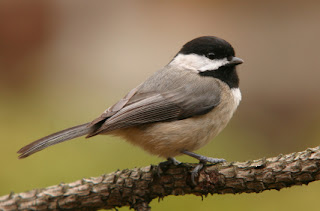Now that winter is approaching, there are a few things that we have remember to do before the snow arrives:
Feeder Preparation
It is always good to clean and repair your bird feeders before winter starts. Take them apart if possible, and clean them properly. To do that add 5ml of bleach, (more or less one teaspoon full) to 4 liters of water. Bleach will help to get rid of harmful bacteria that might be present. An old toothbrush or small brush comes in very handy to clean the corners or small spaces. Once they are clean, remember to put your feeders in a spot where you will be able to see them and where they can be easily accessed for filling and cleaning.
Bird Bath Preparation
If you have a heated bird bath for the winter remember to clean it to before using it again this year. Don't forget to keep an eye open for algae when the bird bath is in use and to periodically clean your bird bath throughout the winter season.
Bird House Preparation
It can be surprising to see how much birds make use of available shelters during the cold winter months. If you don't have any bird houses up in your yard, consider adding some prior to winter arriving. If you do have some up, now is the time to clean them in preparation for winter.
So now that we are ready for winter bird feeding, which birds can we expect to see at our feeders during the winter months? On the prairies here, some of the more common birds that are seen at backyard bird feeders include: chickadees,nuthatches, downy and hairy woodpeckers, house finches, purple finches, pine siskins, and redpolls. For more information on these birds and what mixes to feed them see other articles on this blog or our website.
Feeder Preparation
It is always good to clean and repair your bird feeders before winter starts. Take them apart if possible, and clean them properly. To do that add 5ml of bleach, (more or less one teaspoon full) to 4 liters of water. Bleach will help to get rid of harmful bacteria that might be present. An old toothbrush or small brush comes in very handy to clean the corners or small spaces. Once they are clean, remember to put your feeders in a spot where you will be able to see them and where they can be easily accessed for filling and cleaning.
Bird Bath Preparation
If you have a heated bird bath for the winter remember to clean it to before using it again this year. Don't forget to keep an eye open for algae when the bird bath is in use and to periodically clean your bird bath throughout the winter season.
Bird House Preparation
It can be surprising to see how much birds make use of available shelters during the cold winter months. If you don't have any bird houses up in your yard, consider adding some prior to winter arriving. If you do have some up, now is the time to clean them in preparation for winter.
So now that we are ready for winter bird feeding, which birds can we expect to see at our feeders during the winter months? On the prairies here, some of the more common birds that are seen at backyard bird feeders include: chickadees,nuthatches, downy and hairy woodpeckers, house finches, purple finches, pine siskins, and redpolls. For more information on these birds and what mixes to feed them see other articles on this blog or our website.
This article was written for us by our Saskatchewan bird expert - Willie Delport






